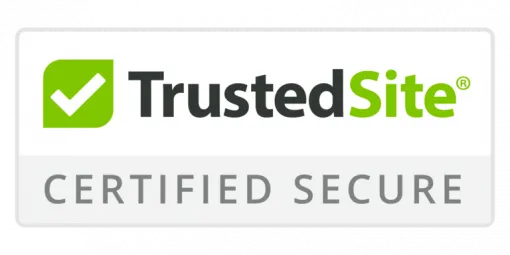Building a real estate crowdfunding portfolio as a side hustle involves investing in properties through online platforms that connect borrowers with investors. To get started, research and select a reputable platform that aligns with your investment goals and risk tolerance. Popular platforms include Fundrise, Rich Uncles, and RealtyMogul.
Once you've chosen a platform, browse the available investment options, which may include residential or commercial properties, real estate investment trusts (REITs), or real estate debt investments. Each option will have its own set of characteristics, such as property type, location, and expected returns.
To invest, you'll typically need to fund a minimum amount, which can range from $1,000 to $5,000, depending on the platform. You can then diversify your portfolio by investing in multiple properties or asset types to minimize risk and maximize returns.
To implement this side hustle, follow these steps:
- Research and select a real estate crowdfunding platform.
- Browse the available investment options and choose the ones that align with your investment goals.
- Fund the minimum investment amount required by the platform.
- Diversify your portfolio by investing in multiple properties or asset types.
- Monitor your investments and adjust your portfolio as needed to optimize returns.
By following these steps, you can create a real estate crowdfunding portfolio that generates passive income with relatively little effort. However, it's essential to remember that investing in real estate always involves some level of risk, so it's crucial to educate yourself on the market and the specific investment options before getting started.
Key Takeaways
- Research and compare real estate crowdfunding platforms, considering fees, funding minimums, and campaign types to find the best fit.
- Evaluate risk tolerance and side hustle goals to decide between time investments, such as property management, and monetary investments.
- Diversify your portfolio by spreading investments across low, moderate, and high-risk real estate crowdfunding options to minimize risk.
- Conduct thorough risk assessments and monitor industry trends to make informed decisions and adjust your strategy for maximizing returns.
Getting Started With Crowdfunding Platforms
Selecting the right crowdfunding platform is a crucial step in launching a successful side hustle. To find the best fit for your project, research and compare various platforms, considering factors such as fees, funding minimums, and campaign types offered. This will help you determine which platform aligns with your project goals and target audience.
As you explore platform options, think about your overall project strategy. Are you looking for a platform that specializes in creative projects or one that focuses on product-based campaigns? Do you want to offer rewards to backers or opt for a donation-based model? Your platform selection should support your project's needs, not limit them.
Some popular crowdfunding platforms for side hustles include Kickstarter, Indiegogo, and Patreon. Each platform has its own unique features, benefits, and drawbacks. By carefully evaluating these options and considering your individual needs, you'll be well on your way to launching a successful crowdfunding campaign for your side hustle.
Platform selection is just the first step – but it's a vital one.
Choosing the Right Investment Type
Choosing the Right Side Hustle Investment
Now that you have a solid understanding of the various side hustle opportunities available, you'll need to determine which type of investment is best suited for your side hustle portfolio.
You have two primary options: time investments and monetary investments. Time investments involve investing your skills and time in a project or business in exchange for potential returns, whereas monetary investments involve investing money in a side hustle in exchange for potential profits.
When choosing between time and monetary investments, consider your risk tolerance and side hustle goals. Time investments typically offer higher potential returns, but also come with higher risk, as the success of the project is uncertain. Monetary investments, on the other hand, offer more predictable returns, but with lower potential upside.
Review the costs, terms, and conditions of each investment type for the side hustles you've selected. Analyze the market demand, competition, and potential for growth to guarantee alignment with your side hustle objectives.
Building a Diversified Portfolio
To maximize returns and minimize risk in your side hustle portfolio, create a diversified mix of low-risk, moderate-risk, and high-risk investments aligned with your goals and risk tolerance. This means spreading investments across multiple income streams, such as freelancing, online sales, and service-based offerings, as well as different industries and client bases. By doing so, you'll be able to ride out market fluctuations and capture growth opportunities.
A well-crafted income allocation strategy is key to achieving a diversified portfolio. Assess your side hustle goals, risk tolerance, and time horizon to determine the best mix of income streams.
Stay informed about market trends, such as shifts in demand, pricing, and industry developments, to adjust your portfolio accordingly. Regularly review your portfolio to ensure it remains aligned with your objectives and rebalance as needed.
Managing Risk and Returns
Evaluating risk and potential returns is essential when creating a side hustle, as it enables you to make informed decisions about your venture and balance the likelihood of losses against the potential for gains.
To manage risk and returns effectively, you need to conduct thorough risk assessments and set realistic return expectations.
- Diversification: Offer a range of services or products to minimize reliance on a single income stream.
- Initial investment: Be cautious of investing too much money upfront, as this increases the risk of significant financial loss.
- Target market: Assess the demand for your services or products to guarantee there's a viable market.
Growing Your Portfolio Over Time
Growing a real estate side hustle over time requires strategic expansion and optimization of your portfolio. As you gain insights from initial investments, you can effectively manage risk and returns, shifting your focus to scaling your side hustle. To achieve this, employ long-term strategies that balance growth with risk management, including portfolio rebalancing. Regularly review and adjust your investments to ensure they align with your side hustle goals and risk tolerance.
| Rebalancing Strategy | Benefits for Side Hustle |
|---|---|
| Quarterly rebalancing | Reduces drift from target allocations, minimizing risk to your side hustle income |
| Semi-annual rebalancing | Balances risk and return, allowing for some market fluctuation and flexibility in your side hustle |
| Annual rebalancing | Suitable for long-term side hustles, allowing for greater market volatility and potential for higher returns |
| Tax-efficient rebalancing | Optimizes tax implications, minimizing liabilities and maximizing your side hustle profits |
Conclusion
Building a diversified real estate crowdfunding portfolio as a side hustle requires ongoing investment and management.
Spreading investments across multiple platforms, property types, and risk levels helps minimize risk and maximize potential returns.
By continuously monitoring data and market trends, you can adjust your investment strategy, rebalancing your portfolio to maintain an optimal risk-reward balance and positioning yourself for long-term success.
Utilizing tax-advantaged accounts and dollar-cost averaging can also help optimize returns, while staying up-to-date on market developments enables you to adapt your strategy as the market evolves.

















































0
View comments